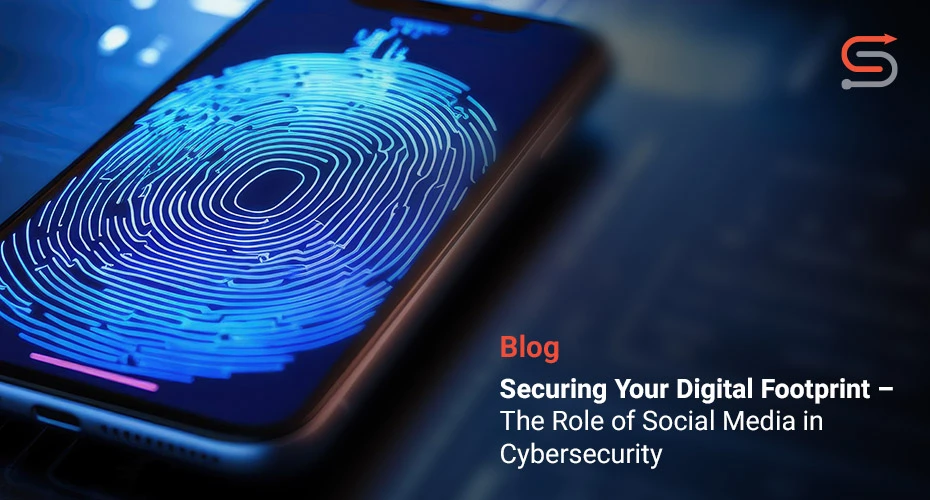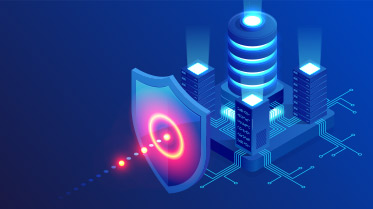Social media adoption isn’t restricted to personal usage anymore. Every company today is leveraging the power of social media to boost visibility and reach. Whether it is a luxury retailer introducing its latest handbag on Instagram or an auto manufacturer showcasing its newest engine on YouTube – brands are utilizing social media like never before.

However, this increased usage of social media to boost brand awareness and connect with customers is also expanding the threat surface. In today’s changing cybersecurity landscape, social media offers several attack opportunities.
What Is a Social Media Digital Footprint?
In the context of social media, a digital footprint is a trail of online activities that a person leaves behind while using a social media platform like Facebook, X (Twitter), and Instagram. Posting status updates, sharing photos and videos, and commenting or liking content all create a digital record that can be tracked and analyzed to gain better insights into a person’s online behavior. Read on as we delve into the many cybersecurity risks of social media and the steps businesses must take to combat these risks.
How a Digital Footprint in Social Media Opens Doors to Several Types of Cybercrime
An estimated 4.9 billion people across the world use social media in 2023. This number is expected to jump to a whopping 5.85 billion by 2027. With the average user spreading their digital footprint across a variety of platforms, there is a heightened risk of cyberattack.
1. Social Engineering
As brands use social media as an essential marketing tool, the probability of social engineering attacks is growing. Bad actors are increasingly using these organizations’ social media handles to execute phishing attacks, data theft, credential theft, and more. For instance, LinkedIn offers the perfect opportunity for hackers to collect the names and emails of employees to execute a phishing attack. It also helps them spot employees who might have access to sensitive financial information, private customer data, or high-privilege network access.
2. Data Misuse
Employees who post frequently on social networking sites pose a high threat to businesses. Oversharing information puts their safety and privacy at risk while also increasing the chances of data theft and misuse. For instance, an employee posting about their next business trip on Facebook can attract the attention of hackers. These hackers can sell unique identifying information on the dark web to competitors or trick employees into transferring funds.
3. Identity Theft
Businesses often tend to share a lot of information on social media. But did you know that even a single comment or like can help cybercriminals commit identity theft? Hackers can use social media information to gain access to accounts and commit fraud, among other things. For instance, attackers can steal personally identifiable information (PII) or trick employees into giving up access to their accounts. They can use this information to impersonate employees on social media, apply for fraudulent loans, run phishing attacks on followers, or even break into financial accounts.
4. Password Attack
As more and more organizations post on social media platforms, the chances of password attacks are also growing. Advancements in AI are enabling hackers to curate thousands of password combinations using common phases, AI-generated word lists, and personal information shared online. Hackers can also send seemingly genuine emails to reset social media passwords and steal credentials once they are reset.
5. Unauthorized Access
Businesses that often post quizzes and puzzles on social networking sites increase the chances of unauthorized access to respondents’ accounts. Hackers can collect personal information about respondents and paint an accurate picture of their personalities, preferences, and behaviors. This data can then be used to guess passwords, recover accounts, and launch targeted attacks.
The Top Steps Organizations Must Take to Boost Cybersecurity
Social media apps have made it extremely easy for brands to increase their market reach. But they also increase the risk of information being stolen and misused. With today’s cybercriminals adept at mining data, manipulating users, and compromising accounts, the onus of improving cybersecurity maturity lies entirely on businesses. Here are the top steps organizations must take to navigate the realm of social media attacks:
1. Strengthen Access Control
As businesses increasingly maintain their presence in social media cyberspace, they must have policies and procedures to strengthen access control. This includes:
- Limiting the number of people who have access to the business’s social media accounts to minimize the attack surface and quickly identify, contain, and mitigate a data breach.
- Appointing one person or team to manage and maintain the organization’s social media handles, thus improving visibility and control.
- Enabling multifactor authentication to minimize the risk of unauthorized access, even if initial credentials have been compromised.
2. Improve Security Awareness
A lot of social media attacks happen because employees are unaware of security best practices. To improve security awareness, businesses must take several steps, including:
- Educating employees on social media security best practices such as following safe password policies, not revealing business information, etc.
- Training employees on the potential hazards of social media and how they can identify and react to potential threats.
- Implementing guidelines for using social media, managing passwords, and handling data online.
3. Ensure Continuous Monitoring
Businesses that increasingly post on social media need to establish a strong and continuous monitoring policy. This can help understand the current state of social media security while enabling organizations to maintain brand consistency and boost regulatory compliance. Steps include:
- Regularly reviewing social media controls, updating policies, and embracing artificial intelligence tools to cater to newer attack mechanisms.
- Keeping track of brand mentions to identify suspicious account activity and taking immediate mitigation steps.
- Revoking account access when no longer required, especially for employees who leave the company.
Safeguard Your Digital Footprint Today
In today’s highly competitive digital era, social media acts as the perfect tool to increase reach and boost engagement. However, the widespread adoption of social media also poses a big threat to cyber resilience. Hackers are increasingly using social media platforms to launch a variety of social engineering, data and identity, and password attacks. They are also exploiting social media platforms to gain unauthorized access and compromise financial data, trade secrets, and PII.
If you want to maintain an online presence and stay a step ahead of hackers, your business must undergo a rigorous cybersecurity assessment and engage with cybersecurity consultants to ensure the security of your social media accounts. Expert consultants can help strengthen access control, improve security awareness, and ensure continuous monitoring, helping you strengthen your cybersecurity, secure your digital footprint, and safeguard your business.
About the Author
Brandon Woolsey is the Cybersecurity Professional Services Manager at Synoptek. He excels in owning system performance, security, and strategic alignment. With a project management focus, he prioritizes IT infrastructure, cybersecurity, and risk mitigation. His credentials include an MS in Information Security Management, numerous certifications, and expertise in process improvement (Six Sigma, Agile, SOX, etc.).






